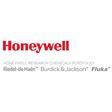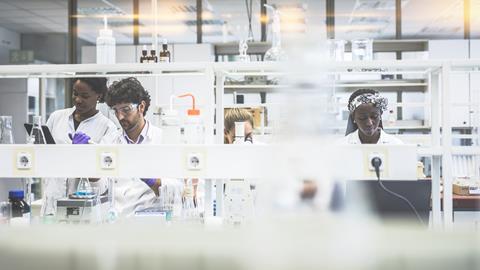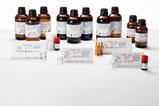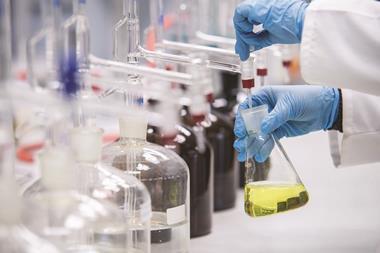Choosing high quality ready-to-use blends and appropriate container sizes can help labs optimise their performance and also save money, according to Søren Høegh

Lab managers are increasingly being faced with a conflicting set of demands. Time constraints are tighter than ever and escalating financial pressures have to be balanced against the ever-present need to maintain and enhance test accuracy, frequently without access to additional resources. To further compound the issues, an intensification in laboratory collaboration means that test results often need to be consistent and repeatable on a global scale. In order to meet all these demands, lab managers need to optimise staff productivity, eliminate redundancy, enhance test accuracy and minimise waste; all without having a detrimental impact on overall lab performance.
The customary first step has been to improve levels of automation and process integration. In response, equipment vendors are implementing increased amounts of hardware interoperability, which has added momentum to this trend. This mechanisation of common laboratory procedures, such as sample dilution, filtration and the addition of reagents, can cut costs and improve productivity. Laboratory automation and robotics also have the potential to eradicate human error, especially in repetitive tasks, while also freeing up lab staff for more demanding roles such as interpreting automated outputs.
There is an important role for manufacturers and suppliers in helping labs optimise their operational efficiencies and protect bottom-line performance
While all these steps are very valuable, this isn’t the whole story. There is also an important role for the manufacturers and suppliers of research chemicals and reagents in helping labs optimise their operational efficiencies and protect bottom-line performance while maintaining and enhancing the overall quality of their results.
For research chemicals, the major considerations are a guaranteed level of purity and a consistent quality. Taken together they not only help ensure compatibility with the latest generation of high-sensitivity laboratory instrumentation but also facilitate reproducibility, even when new applications and techniques emerge. Significantly, the increase in automation and the escalating requirements of quality monitoring systems have also created an enhanced interest in ready-to-use blends for many applications.
Labs have traditionally created their own buffers and solvent blends but this can compromise lot-to-lot consistency, risk product contamination and unnecessarily exposing lab staff to potentially hazardous materials. There are also cost implications associated with in-house preparation such as blending errors, adulteration issues, increased labour costs and concerns with waste disposal of bad batches. Raw materials also take up space and tie up lab budgets – so it makes good economic sense for many applications to purchase precise quantities of ready-to-use blends with a guaranteed lot-to-lot consistency. All of Honeywell’s blends are made using precision apparatus, with high purity and consistent products, assuring you always get reproducible and accurate results, lot after lot.
All of Honeywell’s blends are made using precision apparatus, with high purity and consistent products, assuring you always get reproducible and accurate results, lot after lot.
In order to minimise chemicals stocks, lab managers should also consider concentrates. For example, concentrates for volumetric solutions are available in ampules. Each ampule contains an exact amount of a chemical substance and, by diluting its entire content to a desired volume, solutions of various concentrations can be conveniently prepared. Concentrates are especially handy because they offer easy-to-achieve reproducible quality as well as time and space savings.
How research chemicals are delivered can also have an impact on a lab’s performance – having the right materials delivered in the right quantities and at the right time offers a number of clear advantages. Packaging options range from returnable/re-usable containers to Volpac alternatives depending on whether the volumes required are for the lab or for production.
Volpac containers for ready-to use volumetric solutions consist of a rugged cardboard cube containing a flexible inner polyethylene bag with an outlet tap. They are available in a range of sizes up to 10 litres. As the contents are withdrawn, the polyethylene bag collapses, preventing atmospheric contamination. There is no ventilation of the vessel thus the evaporation and condensation of water that can increase the error of the titre is prevented. Volpac offers simple handling, titration without contamination, reduced waste and easy disposal.
Lab managers should also consider returnable containers as they help maintain solvent purity and reduce packaging waste. These containers provide an environmentally responsible way to enhance lab safety and convenience, especially when using larger solvent volumes. For example, Honeywell’s returnable stainless steel pressure dispense system (SSPDS) is a fully sealed, break-resistant option that reduces employee exposure and increases the useful shelf life of solvents by maintaining solvent purity. They are available with special accessories that allow their direct coupling to an instrument or fume hood dispenser, which limits the possibility of contamination, reduces potential exposure hazards and facilitates automation.
It is therefore important to work with companies that offer the best range of bespoke solutions and that are prepared to work in partnership with their lab customers.
Choosing concentrates or ready-to-use solutions in dedicated packaging, from ampules to returnable stainless steel containers, and working with chemical suppliers that fully understand a lab’s needs, can help cut waste and increase efficiency while enhancing safety. It is therefore important to work with companies that offer the best range of bespoke solutions and that are prepared to work in partnership with their lab customers.
Søren Høegh is Global Marketing Manager for Honeywell Research Chemicals


















1 Reader's comment